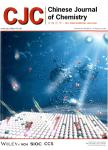Two-Dimensional Cathode Materials for Aqueous Rechargeable Zinc-Ion Batteries
作者机构:School of Materials Science and EngineeringNankai UniversityTianjin 300350China
出 版 物:《Chinese Journal of Chemistry》 (中国化学(英文版))
年 卷 期:2022年第40卷第8期
页 面:973-988页
核心收录:
学科分类:0808[工学-电气工程] 08[工学] 0703[理学-化学]
基 金:supported by NSFC(Nos.51873088,12004195) Tianjin Municipal Science and Technology Commission(Nos.20JCQNJC01820,18ZLZXZF00480) 111Project(No.B18030)in China.
主 题:Two-dimensional materials Zinc-ion batteries Electrochemistry Nanostructures Energy conversion
摘 要:Rechargeable aqueous zinc-ion batteries(ZIBs)featuring low cost,superior performance,and environmental benignity have attracted dramatic atten-tion as a promising alternative energy storage system to lithium-ion batteries.Nevertheless,the development of ZIBs is still hindered by the limited selection of cathode materials due to the large solvation sheath and charge density of Zn^(2+).Two-dimensional(2D)materials have attracted extraor-dinary attention owing to the unique layered structure bonded by weak van der Waals forces,which makes them promising host materials for Zn^(2+)intercalation/de-intercalation.In this review,the synthesis and properties of 2D materials for cathodes in ZIBs are discussed.Meanwhile,various re-ports on 2D materials as ZIBs cathodes are summarized.Three key strategies to elicit improved Zn2+storage abilities:defect engineering,hetero-structure engineering,and interlayer engineering,are highlighted.Finally,this review ends with perspectives relating to the challenges and opportu-nities of 2D materials-based ZIBs.



